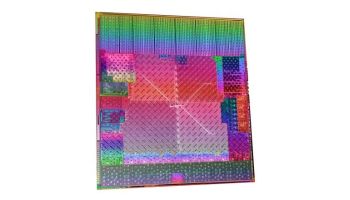

Advanced Micro Devices (AMD) officials gave the industry a glimpse of their upcoming “Llano” processor, part of the company’s Fusion initiative that integrates computing and graphics capabilities onto a single piece of silicon.
The company demonstrated what the APU (Accelerated Processing Unit) can do during the AMD Technical Forum and Exhibition in Taiwan.
AMD officials simultaneously ran three individual, compute-intensive workloads on Windows 7. The tasks included calculating the value of Pi to 32 million decimal places and decoding High Definition (HD) video from a Blu-ray disc, the company said.
“Llano is the kind of APU that makes you stop and stare,” said Chris Cloran, corporate vice president and general manager of AMD’s client group, in a blog post. “It stands to deliver world-class performance, ranging from everyday multi-tasking to stunning video and gaming.”
The chip, which is designed for notebooks, ultra-thin laptops and desktop PCs, is scheduled to begin appearing in systems in 2011. Llano and its companion “Ontario”, aimed at low-end notebooks, netbooks and tablets, are the first of AMD’s Fusion chip series. Systems powered by Ontario also are due out next year.
The company became a player in the graphics market in 2006, when it bought graphics processing unit (GPU) maker ATI for $5.4 billion. The purchase proved to be a financial burden on the company but officials saw the promise of integrating the CPU and GPU with businesses and consumers demanding greater performance in such areas as videos and multimedia applications.
With ATI under its wing, AMD has made strong strides in the graphics market. Market research firm Jon Peddie Research reported in August that while Intel remained the world’s top PC graphics vendor in the second quarter, AMD saw significant gains in shipments and market share, mostly at the expense of graphics vendor Nvidia.
Intel, which in May put an end to its “Larrabee” project to design its own discrete graphics chip, talked up its “Sandy Bridge” Core processor which also includes integrated graphics capabilities. According to Intel CEO Paul Otellini, Sandy Bridge, which will appear in systems starting in early 2011, offers graphics performance that is 25 times faster than Intel chips from 2007.
Pebble creator launches two new PebbleOS-based smartwatches with 30-day battery life, e-ink screens after OS…
Amazon loses appeal in Luxembourg's administrative court over 746m euro GDPR fine related to use…
Nvidia, xAI to participate in project backed by BlackRock, Microsoft to invest $100bn in AI…
Google agrees to pay $28m to settle claims it offered higher pay and more opportunities…
Chinese social media giant Tencent triples capital expenditure on AI data centres and other areas…
EU gives Apple demands for third-party developer access to iOS features and greater responsiveness in…
View Comments
27x faster than "awful" is..um... really awful graphics.